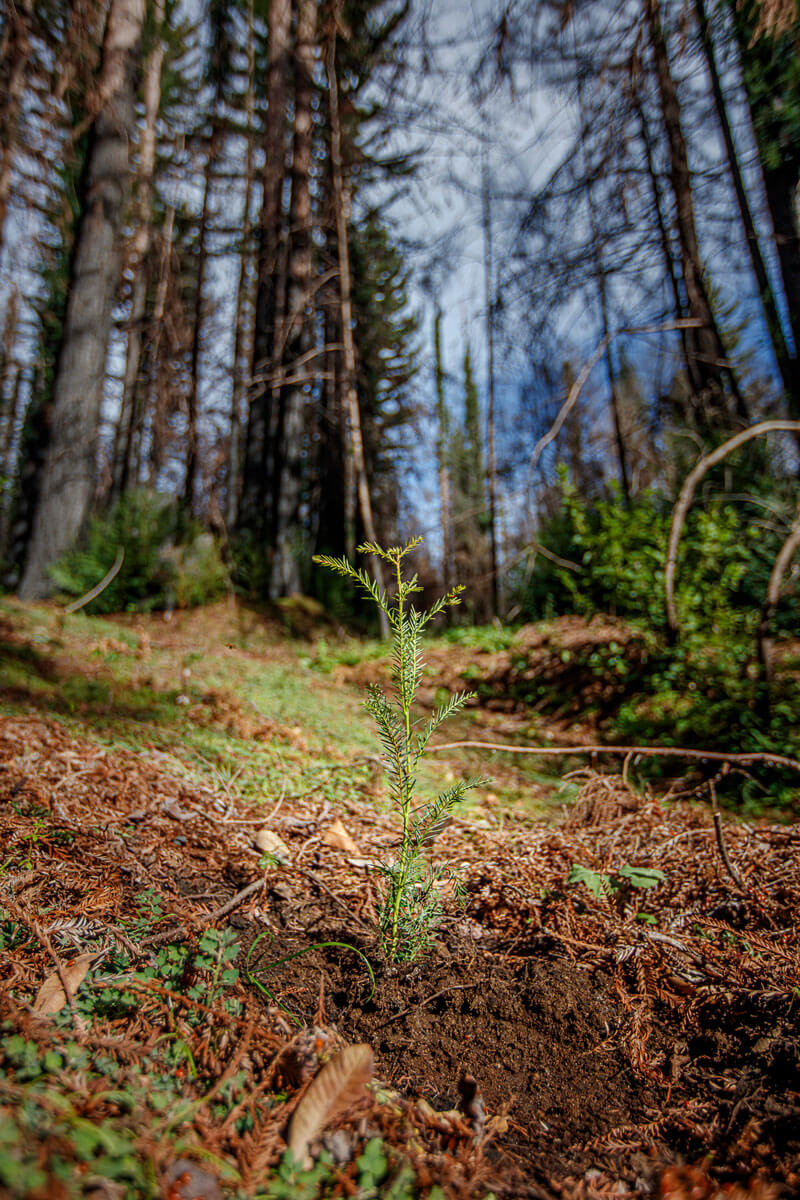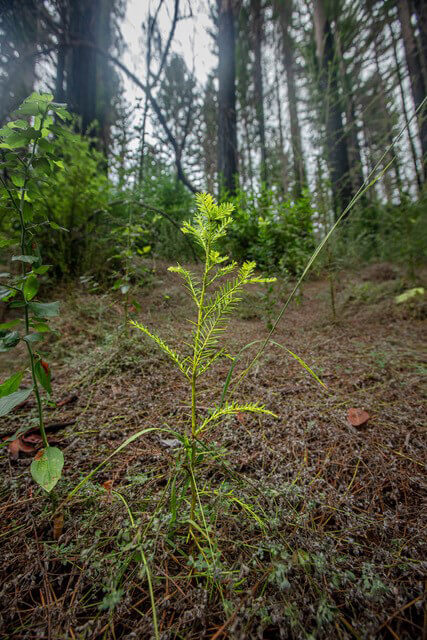Story of a Seedling
photo by Ian Bornarth.
Small Seeds, Mighty Mission
Each seemingly puny seed–containing the ability to become the tallest tree on Earth and store more carbon than any other species–was gathered in the Santa Cruz mountains and grown more than 100 miles away in a greenhouse. The safe, controlled environment was perfectly tuned to the needs of a germinating redwood seed by experts at University of California - Davis. Here, the seedlings grow to about a foot tall, sporting several branches of bright green leaves–still small in size but not in numbers.
There are nearly 24,000 of them, a large number equal to their large mission. CalFire’s L.A. Moran Reforestation Center provided these 23,000 redwood seedlings, and 900 Douglas-fir seedlings, for post-fire recovery at San Vicente Redwoods. All of its 8,852 acres burned in the 2020 CZU Wildfire–the most recent in a century-long list of damaging impacts that the forest has endured.
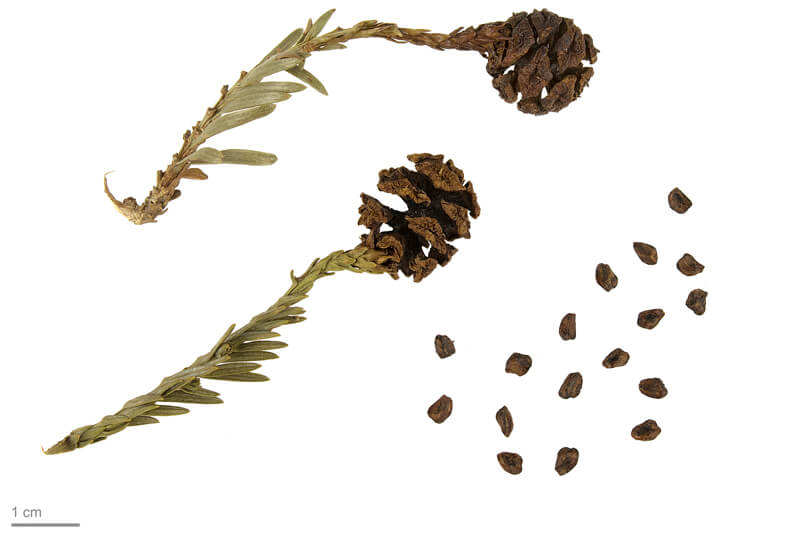
Redwood cones and seeds, by Roger Culos.
Re-establishing the redwood forest in its former footprint was important even before the fire. The fire made them–and the Douglas firs–even more important than we’d ever thought possible.
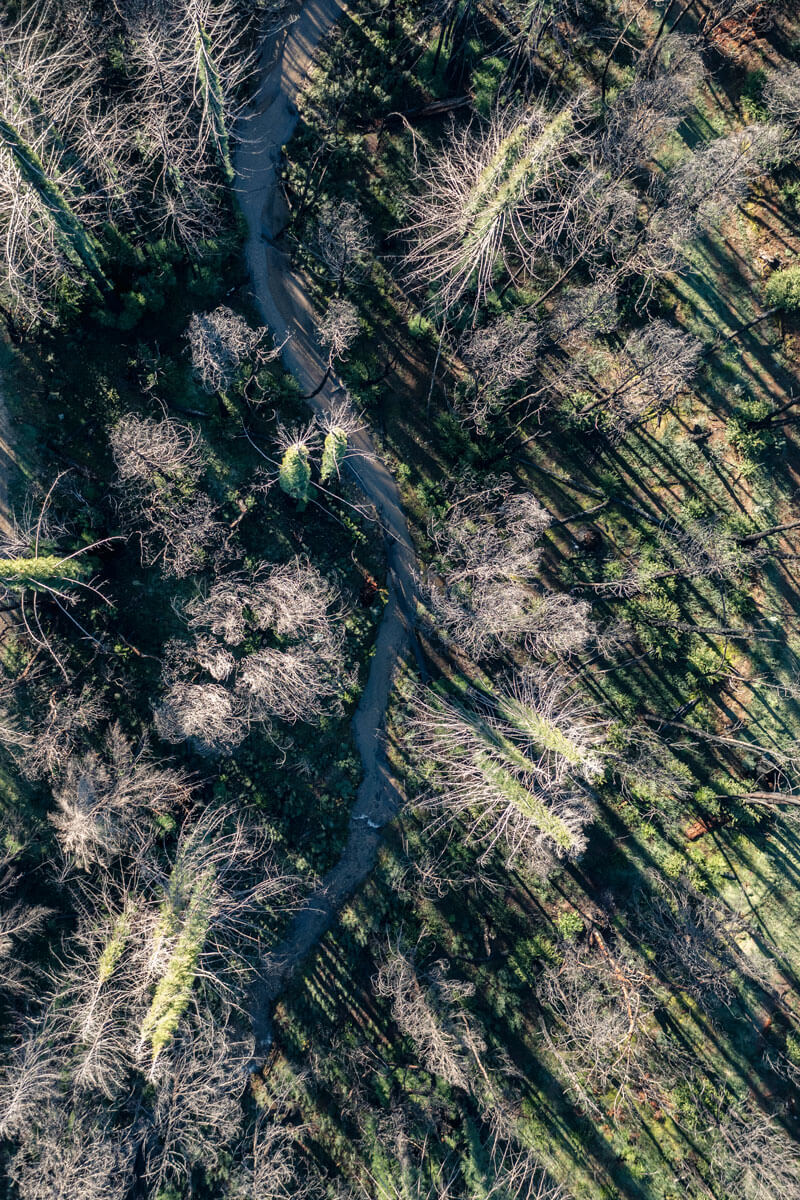
Green recovering redwoods along Big Creek, photo by Teddy Miller.
Clear-Cuts and Conflagration
Subjected to clear-cut logging more than a century ago, tanoaks and other fast-growing hardwood trees quickly grew in the stead of the redwoods and Douglas-firs that had dominated San Vicente Redwoods’ forests before. If left in that condition, the redwood forest’s recovery could take centuries–leaving plant and wildlife species with a huge, unhealthy habitat in the middle of 27,000 crucial, protected acres. But the fast-growing hardwoods also lack a crucial feature: the fire resistance of mature redwoods.
Then, the CZU Wildfire blazed through San Vicente Redwoods in 2020. While 90% of the redwoods it touched are expected to recover, they will take decades to become green again. And most of the hardwood trees and many of the Douglas-firs have not survived. But the loss of less fire resilient trees opens up room on the forest floor and the canopy above, giving the fire-resistant redwood seedlings a headstart to restore their footprint. This will accomplish a long-sought after goal: re-establish redwoods. Important ecologically, this is now imperative for the anticipated wildfires, droughts, and other climate changes ahead.
Near the headwaters of Big Creek, one of eight creeks that flow across the vastness of San Vicente Redwoods, the fire was especially scorching. The loss of trees and plants left the watershed at risk for major erosion with the soil, untethered by healthy roots, more easily washed away from where it’s needed on the forest floor and into the stream–muddying up its water quality and clogging up its flow. While the seedlings grew quickly in the safety of the greenhouse, they could serve a crucial role in the Big Creek watershed.
From Pots to Planting
In January 2022, the seedlings traveled southwest in the cool comfort of a refrigerated truck back to the Santa Cruz mountains and their new home at San Vicente Redwoods. Over about two weeks, the saplings were removed from the confines of their pots one by one and placed into pouches carried by professionals like Nadia Hamey, Property Manager and Forester of San Vicente Redwoods, to its carefully selected site with plenty of room to grow wide and tall to its full potential. The 23,000 redwoods were lovingly planted by hand–across 4,000 acres in the Big Creek watershed–and wished good luck. Now, they’re on their own.
Free from their pots and planted in the ground, the rest is up to the seedlings. But the harsh reality is many won’t make it. Despite the renowned resilience of redwoods, these seedlings are at their most vulnerable. Field Operations Manager Melisa Cambron Perez, who has worked on many other planting projects, says their survival rate could be much lower than 40%, based on her experience with plant survivorship in grasslands, oak woodlands, and wetlands that faced fewer challenges.
video by CalFire.
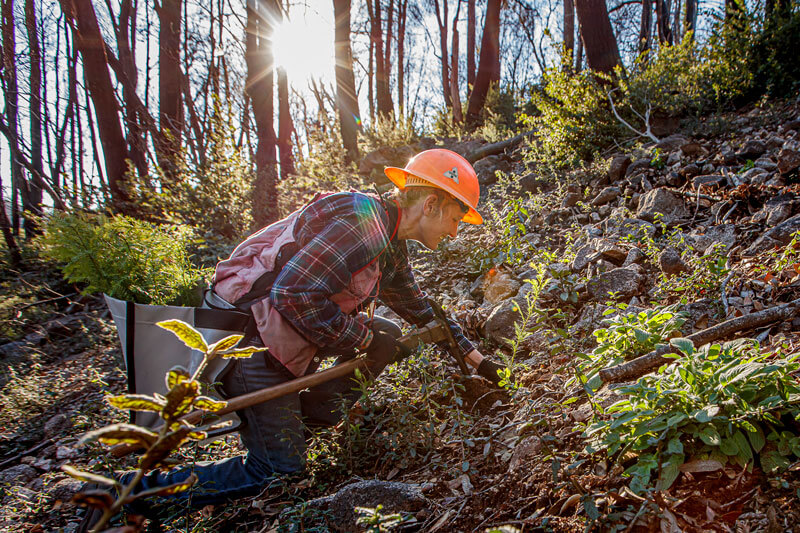
Nadia Hamey, Property Manager and Forester of San Vicente Redwoods, planting redwood sedlings, by Ian Bornarth.
Considerable Challenges
University of Santa Cruz interns are coordinating with Nadia to support monitoring their survival rates. Although this number may sound disheartening, redwoods propagate much more successfully sprouting from an existing tree than they do from seeds. New trees that sprout from a parent tree, such as in iconic redwood family circles and fairy rings, have the benefit of support from that tree’s well-established interconnected root and fungi network which can access water and nutrients from untold feet or even acres of soil. It will take time–and tolerance–for these seedlings to develop their root systems.
While their growth is no longer constrained by their pots, “Going from a pot to the ground alone is a major shock for plants”, Melisa says. Not to mention the seedlings have lived all of their lives in the safe, controlled environment of the greenhouse with ideal temperatures, light, and water for a redwood. At San Vicente Redwoods, they’ll be exposed to the elements, drought, and hungry competing fauna.
When the seedlings were first planted in January, the ground was still relatively bare leaving the seedlings as targets for hungry wildlife. But since then their fire-responding neighbors have been voraciously rebounding and while these plants help protect the seedlings from being eaten–reducing one risk to the seedlings survival–they are themselves, ironically, the seedlings biggest challenge to survival.
It is rare for redwoods to seem small, but yerba santa, 8-10 foot tall ceanothus, and bush poppies, to name a few are towering over the seedlings. Lush examples of nature’s recovery from the fire, they outcompete the seedlings for space, water, and sunlight at this stage.
However, when a 2,000 year lifespan lies ahead of you, you can afford to be patient and bide your time. Adapted to sprout under the canopy of their giant kin, redwood seedlings have more tolerance for shade than many other plants and trees. Luckily for these little seedlings, they won’t have to wait too long.
photos by Ian Bornarth.
Forest of the Future
Within the year, Nadia, Melisa, and the Land Team plan to “release” them by thinning the surrounding vegetation to increase the redwood’s chances of survival and free them to grow on their own. Through multifaceted forest restoration strategies like this, the Land Team hopes to help redwoods grow to their full potential–providing habitat and clean air for generations in the thousands of years to come.
You can make an impact for forest resiliency with a gift to Grow the Forest.
More to Explore
- Read more about the redwood fire recovery timeline in Nature Needs Time to Heal
- Learn more about how we care for our lands
- Read more about San Vicente Redwoods
